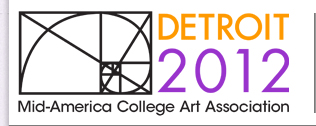Session Title
African American Artists in the MIdwest
Start Date
5-10-2012 3:00 PM
End Date
5-10-2012 4:30 PM
Session Description
African-American Artists in the Midwest
While American art history tends to be fairly parochial with its emphasis on East Coast artists, African American art history seems to suffer even more strongly from this bias. This session will be devoted to African-American artists or art institutions in the Midwest. The Great Migration from 1913-1949 brought hundreds of thousands of black Americans to Midwest industrial cities like Chicago, Detroit, Cleveland, Minneapolis, and St. Louis. And some of these people and their descendents made art. Indeed on a trip to Detroit in 1964, Langston Hughes said, “Harlem used to be the Negro cultural center of America. If Detroit has not already become so, it is well on its way to becoming it.” Literary historians have frequently taken up the topic of Midwestern African-American writers, but this is far less true in the case of black visual artists. In line with the conference's content session of Community and Collaboration, papers treating African American mural projects in the Midwest are especially encouraged, as are papers dealing with the educational outreach activities of artists and art institutions. However, all papers dealing with Midwestern African-American art from all time periods, colonial to the present, are welcomed for consideration.
African American Artists in the MIdwest
African-American Artists in the Midwest
While American art history tends to be fairly parochial with its emphasis on East Coast artists, African American art history seems to suffer even more strongly from this bias. This session will be devoted to African-American artists or art institutions in the Midwest. The Great Migration from 1913-1949 brought hundreds of thousands of black Americans to Midwest industrial cities like Chicago, Detroit, Cleveland, Minneapolis, and St. Louis. And some of these people and their descendents made art. Indeed on a trip to Detroit in 1964, Langston Hughes said, “Harlem used to be the Negro cultural center of America. If Detroit has not already become so, it is well on its way to becoming it.” Literary historians have frequently taken up the topic of Midwestern African-American writers, but this is far less true in the case of black visual artists. In line with the conference's content session of Community and Collaboration, papers treating African American mural projects in the Midwest are especially encouraged, as are papers dealing with the educational outreach activities of artists and art institutions. However, all papers dealing with Midwestern African-American art from all time periods, colonial to the present, are welcomed for consideration.

